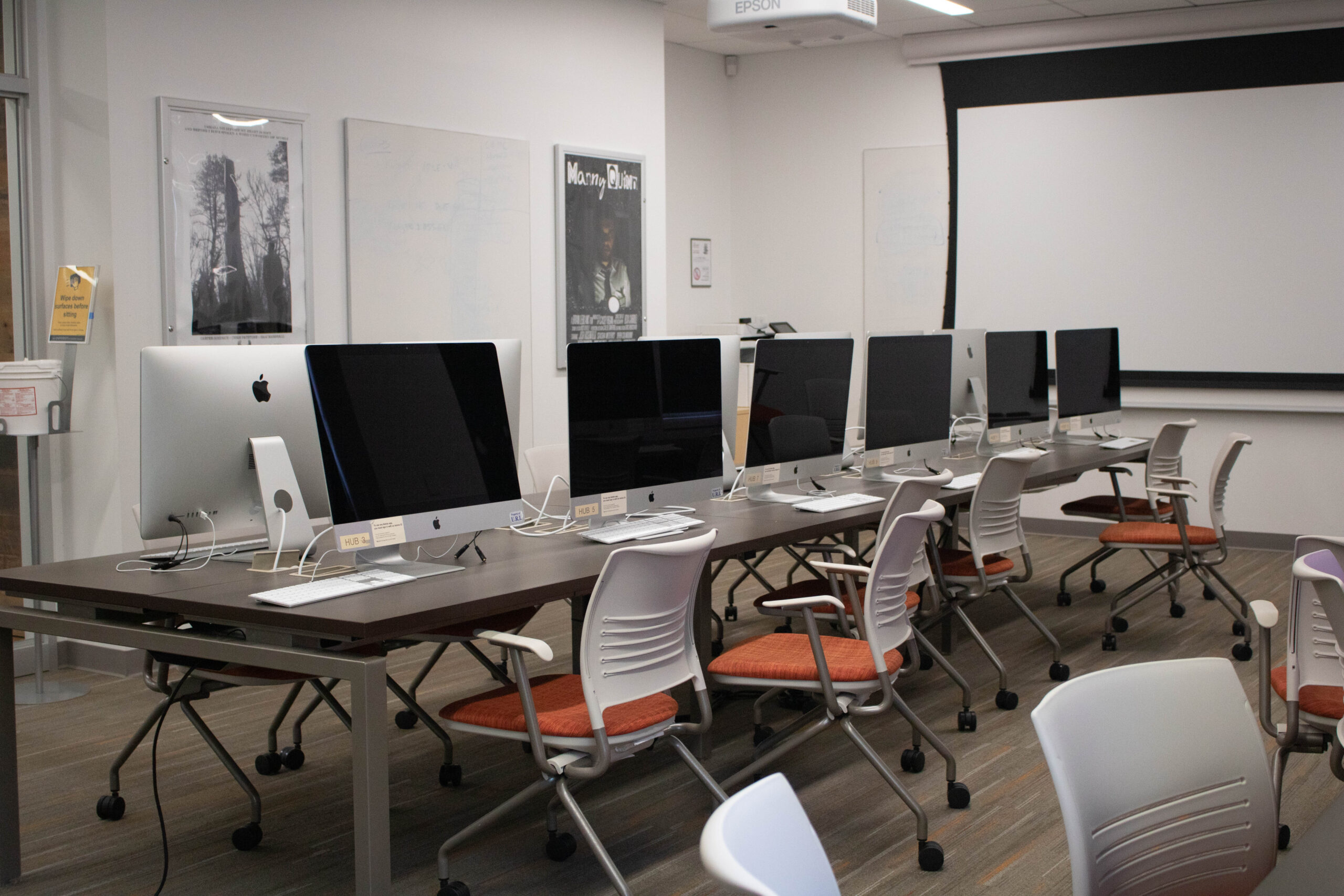General assignment classrooms to receive media updates
While not all classrooms share the same technology, URI is working to standardize technology in general assignment classrooms. PHOTO CREDIT: Melissa Marchese
With classes returning to in-person instruction at the University of Rhode Island, faculty and staff members are back to navigating the technology within each classroom.
For many years at URI, not all classrooms had the same technology system because of the different architecture in each building. Katie Babula, the lead information technologist for URI’s IT Communications Department, explained that this is also due to the different types of classrooms within the University.
“There are two types of classrooms,” Babula said. “The first are general assignment classrooms which are overseen by a branch of the provost’s office. That’s where our funding comes from in terms of upgrades for those classrooms, and we have all of them on a cycle and things like that. There’s a built-in update and maintenance schedule for about 150 of the classrooms.”
Some of these classrooms include locations in Swan Hall, Chafee Auditorium and some of the classrooms in Bliss Hall, according to Babula.
The other type of classrooms at URI are departmental classrooms, which departments own independently. Babula explained that funds can be tighter for the departments and therefore the technology systems in these classrooms may not be updated as consistently, but are usually on a seven-year update cycle.
Babula works to update the general assignment classrooms and said that IT keeps the same “base-level formula” in every classroom to make it easier for instructors to switch between those types of rooms.
“The tech we put in classrooms is three-to-four years ahead,” Babula said. “But giving classrooms the same base-level formula really helps. It’s like when you go from an iPad to an iPhone. Every [General Assignment] classroom has the same touch screen interface.”
This interface that Babula discussed about allows all professors in general assignment classrooms to access controls such as volume and Zoom from a touch screen on each lectern. These classrooms also share the same type of technology that is in departmental classrooms.
“For the second and third floor of Swan [Hall], those are what we consider more traditional lecture-type classrooms,” Babula said. “So there’s a lectern at the front of the classroom that will have a room computer for faculty so they don’t have to worry about bringing their own computer. There’s still laptop hookups so should they desire to bring their own laptop there is connections at the lectern.”
The classrooms also are equipped with Blu-ray players and document cameras that allow professors to project images of paper documents and other objects.
But not all classrooms have these devices, which is where confusion can come into play for faculty.
Junior Megan Ayles, a communication studies and journalism double major, said that while she did not know about the different types of classrooms at the University, she has seen some of her professors struggle with technology in the past.
“Honestly, for me, it’s not that big of a deal if it’s a quick thing,” Ayles said. “But sometimes my professors won’t know how to turn on the projectors, or they’ll have issues with the Wi-Fi, and it’ll take up 10 minutes of class time which can be a lot of time given that some classes are only 50 minutes long.”
Though switching all classrooms to the same technology would help some of these issues that Ayles spoke on, Babula said it is unlikely that all classrooms at URI will ever switch over to the same technology due to funding differences. For now, IT is doing what it can to support all students and faculty in the transition back into in-person classrooms.

